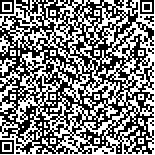李峤桢,冯枫,杜霞,等.脊髓损伤患者的脑电信号特征变化及其与功能独立性的相关性研究[J].中华物理医学与康复杂志,2025,47(9):776-786
扫码阅读全文

|
| 脊髓损伤患者的脑电信号特征变化及其与功能独立性的相关性研究 |
|
| |
| DOI:10.3760/cma.j.cn421666-20241231-01016 |
| 中文关键词: 脊髓损伤 颈髓损伤 脑电图 功能独立性 |
| 英文关键词: Spinal cord injury Cervical spinal cord Electroencephalography Functional independence |
| 基金项目:国家自然科学基金(82272591, 82072534) |
|
| 摘要点击次数: 608 |
| 全文下载次数: 427 |
| 中文摘要: |
| 目的 运用脑电图(EEG)技术探讨脊髓损伤(SCI)患者的脑电信号特征变化及其与功能独立性的相关性。 方法 选取西京医院康复医学科EEG数据库中2018年1月至2023年11月符合纳入和排除标准的SCI患者90例(SCI组),同时选取与SCI患者一般资料相匹配的45例健康受试者(对照组),收集其睁眼与闭眼状态下的EEG数据并分析差异。将SCI患者的EEG检测数据与采集脑电信息当日的脊髓损伤独立能力评估(SCIM)评分进行相关性分析。根据损伤节段将SCI患者细分为颈髓损伤组(SCI-C组)和非颈髓损伤组(SCI-NC组),每组45例,对比分析两个亚组的EEG数据差异及其与SCIM评分的相关性。 结果 ①SCI患者睁眼状态下额叶、中央区、颞叶、右枕叶的EEG功率普遍低于健康受试者,差异偏向δ、θ低频段(P<0.05),额叶和右侧顶叶α1频段的EEG功率高于健康受试者(P<0.05);SCI患者闭眼状态下右前额、额叶、左侧中央区、颞叶δ频段的EEG功率低于健康受试者(P<0.05),右前额、额叶、中央区、顶叶α1频段的EEG功率高于健康受试者(P<0.05)。SCI患者在右前额、额叶、中央区、顶叶、颞叶α1频段的反应性EEG功率较健康受试者低(P<0.05)。相关性分析结果显示,SCI患者睁眼状态下右侧额叶β2频段、右侧颞叶α2频段和β频段的EEG功率越高,SCIM评分越高,两者呈显著正相关(P<0.05);SCI患者闭眼状态下前额叶α2频段、额叶α2频段和β2频段、右侧中央区α2频段、颞叶α2和β频段、枕叶α2频段和β2频段的EEG功率越高,SCIM评分越高,两者呈显著正相关(P<0.05)。②亚组分析结果显示,SCI-C组患者睁眼状态下左颞叶δ频段和顶叶α2频段的EEG功率低于SCI-NC组患者(P<0.05);SCI-C组患者闭眼状态下左额叶、左顶叶、左颞叶δ频段和额叶、中央区、顶叶、颞叶、右枕叶α2频段的EEG功率低于SCI-NC组患者(P<0.05)。SCI-C组患者颞叶δ频段,左前额、额叶、中央区、顶叶、颞叶、右枕叶α2频段以及右顶叶和左枕叶β2频段的反应性EEG功率较SCI-NC组低(P<0.05)。相关性分析结果显示,SCI-C组患者睁眼状态下右侧颞叶β1频段和β2频段的EEG功率越高,SCIM评分越高,两者呈显著正相关(P<0.05);SCI-C组患者闭眼状态下右侧前额叶α2频段和β1频段的EEG功率越高,SCIM评分越高,两者呈显著正相关(P<0.05);SCI-NC组患者睁眼状态下前额叶δ频段,左前额β1频段和β2频段,额叶、中央区δ频段、右顶叶、右颞叶δ频段的EEG功率越高,SCIM评分越高,两者呈显著正相关(P<0.05)。 结论 颈段SCI与非颈段SCI患者的EEG功率均存在特征性变化,且与功能独立性相关。 |
| 英文摘要: |
| Objective To relate the changes in electroencephalography (EEG) signals after a spinal cord injury (SCI) with functional independence. Methods The EEG data describing ninety SCI patients in both open and closed eye states were compared with those collected from 45 healthy counterparts. The SCI patients′ EEG data were correlated with their spinal cord independence measure (SCIM) scores at corresponding time points. The SCI patients were divided into a cervical SCI group (SCI-C group) and a non-cervical SCI group (SCI-NC group), with 45 cases in each group. The difference in EEG data between them and its correlation with the SCIM scores were also compared and analyzed. Results In the eyes-open state, the EEG power in the frontal, central, temporal, and right occipital regions of the SCI group was lower than among the control group, on average. There were significant differences in the δ and θ low-frequency bands. The α1 band power in the frontal and right parietal regions was significantly higher in the SCI group, on average. With the eyes closed the δ band power in the right prefrontal, frontal, left central, and temporal regions of the SCI group was lower than among the control group, while the α1 band power in the right prefrontal, frontal, central, and parietal regions was significantly higher. The reactivity to eye opening of the α1 band in the right prefrontal, frontal, central, parietal, and temporal regions was less in the SCI patients compared to healthy subjects. Among the SCI patients, higher EEG power in the β2 band of the right frontal lobe and the α2 and β bands of the right temporal lobe was significantly positively correlated with higher SCIM scores during the eyes-open measurements. And the higher EEG power in the α2 band of the prefrontal and frontal lobes, the β2 band of the frontal lobe, the α2 band of the right central region, the α2 and β bands of the temporal lobe, and the α2 and β2 bands of the occipital lobe was significantly positively correlated with higher SCIM scores during the eyes-closed state. The subgroup analysis showed that the δ band power in the left temporal lobe and the α2 band power in the parietal lobe were lower among the SCI-C compared with the SCI-NC patients in the eyes-open state. With the eyes closed, the δ band power in the left frontal, left parietal, and left temporal lobes and the α2 band power in the frontal, central, parietal, temporal, and right occipital lobes was significantly lower in the SCI-C group compared to the SCI-NC group, on average. The reactivity to eye opening of the δ band in the temporal lobe, the α2 band in the left prefrontal, frontal, central, parietal, temporal, and right occipital lobes, and the β2 band in the right parietal and left occipital lobes was less in the SCI-C group than in the SCI-NC group (P≤0.05). Among the SCI-C patients, higher EEG power in the β1 and β2 bands of the right temporal lobe with the eyes open was significantly positively correlated with higher SCIM scores. With the eyes closed, higher EEG power in the α2 and β1 bands of the right prefrontal lobe was significantly positively correlated with higher SCIM scores. Among the SCI-NC patients, higher EEG power in the δ band of the prefrontal lobe, the β1 and β2 bands of the left prefrontal lobe, and the δ bands of the frontal, central, right parietal, and right temporal lobes during the eyes open measurements was significantly positively correlated with higher SCIM scores. Conclusions The EEG power of cervical and non-cervical SCI patients shows characteristic changes which correlate with their functional independence. |
|
查看全文
查看/发表评论 下载PDF阅读器 |
| 关闭 |
|
|
|